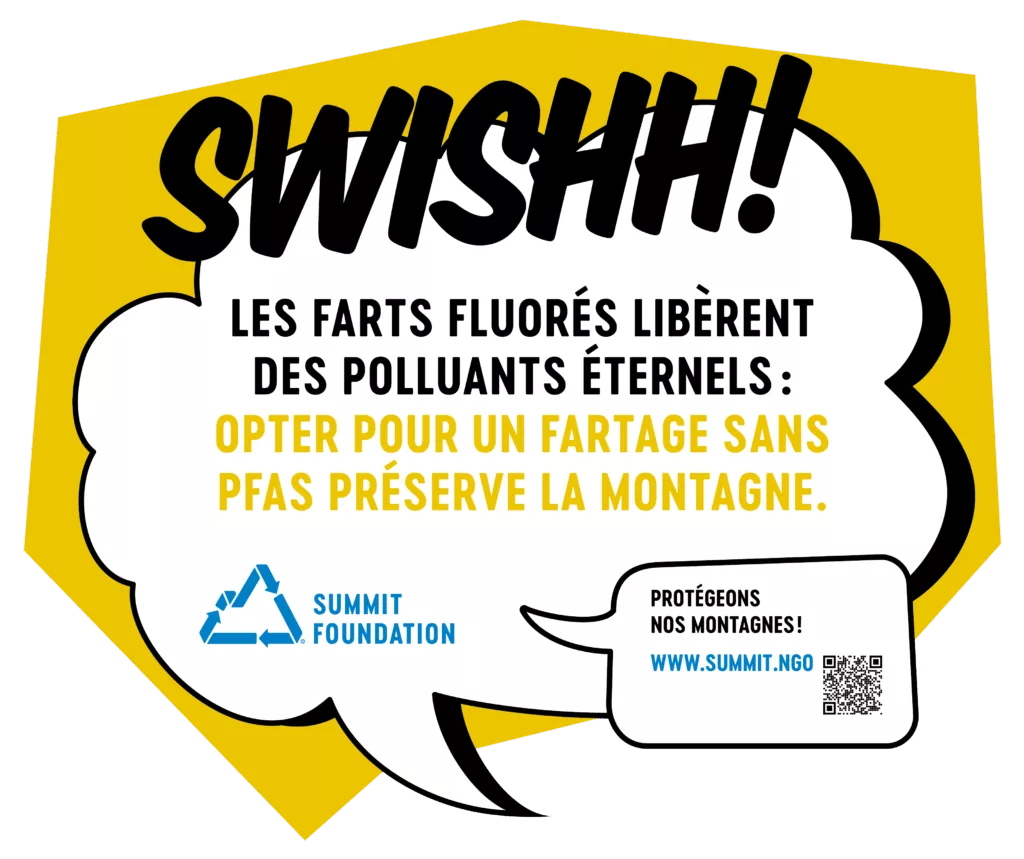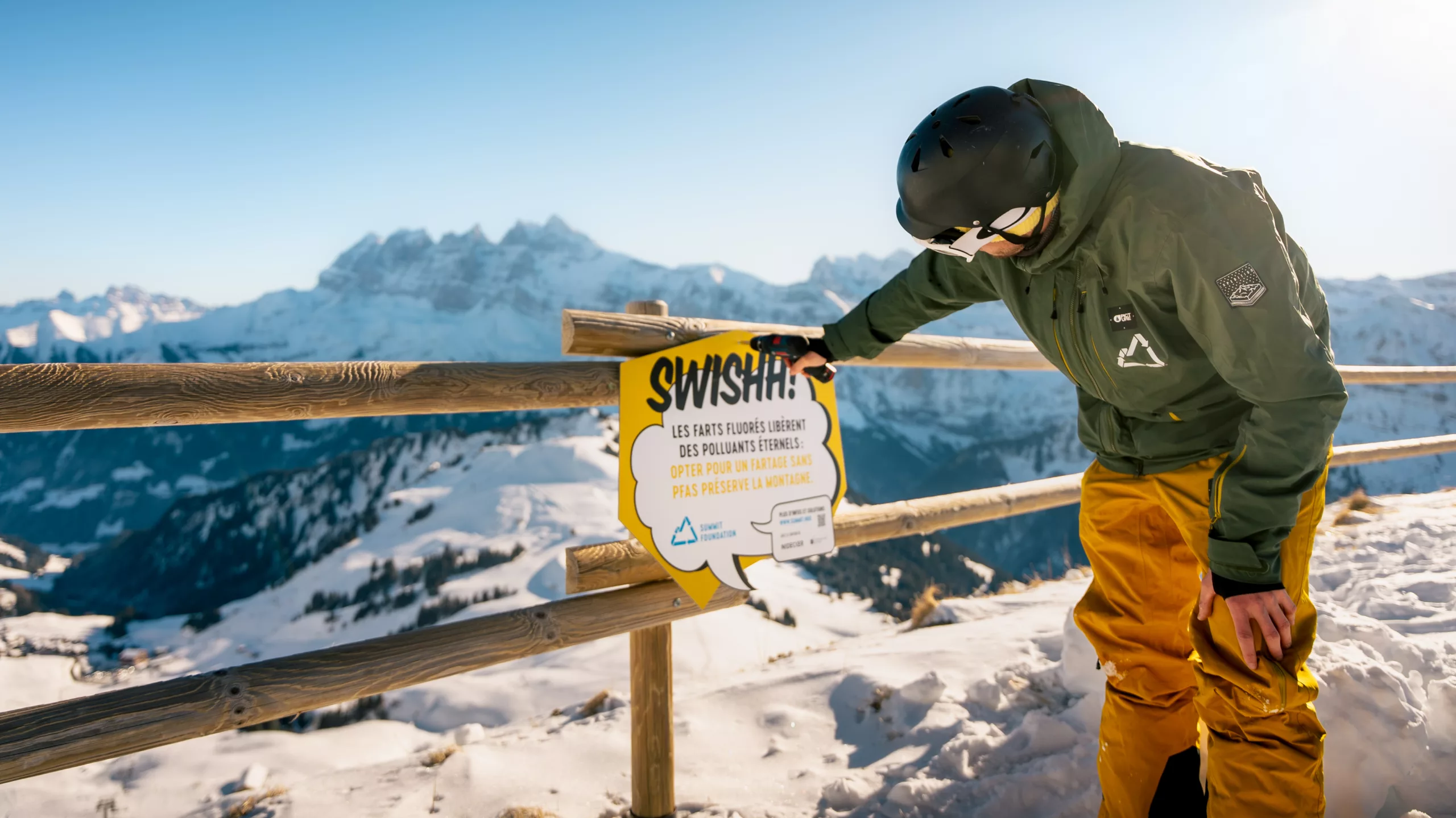


• PFAS encompass more than 10,000 synthetic molecules that are widely used in industrial processes and various products.
They are chains made up of carbon and fluorine atoms.
• They persist in the environment and are harmful to both wildlife and human health.
• PFAS are found in the waxes used for skis.
They are released into the environment through the abrasion of the skis.
PFAS (perfluoroalkyl and polyfluoroalkyl substances) refer to a family of more than 10,000 synthetic molecules1. They consist of carbon and fluorine atoms arranged in chains of varying lengths. These molecules are valued for their non-stick properties2 . They are water-repellent, surfactant, heat-resistant, and chemically stable. PFAS are used in many industrial processes and everyday consumer products3 (for example: frying pans, waterproofing agents, and more.) Among these uses is ski waxing — fluorinated waxes are known to improve glide performance4.
However, PFAS are harmful to the environment and to human health.5. PFAS are often called forever chemicals because their chemical stability allows them to persist in the environment. They can enter living organisms through various pathways. The main route is oral — primarily through water, food, and breast milk for young children. Exposure can also occur through the skin or by inhalation. PFAS have toxic effects6 on humans (and also on animals). The list is long, but among the known effects are: carcinogenicity, immunotoxicity, reduced birth weight in infants, and endocrine disruption.
Skiing is therefore a source of PFAS pollution. During the waxing process, about 80% of the product7 is lost — which can be problematic if not properly disposed of, and may lead to PFAS exposure through inhalation. The remaining 20% can end up in the environment during skiing, as the wax wears off through abrasion. Studies have shown higher concentrations of PFAS in ski areas8 compared to non-skiing zones. A report9 produced by EPFL, in collaboration with the Summit Foundation, highlighted the presence of PFAS in Swiss ski resorts.
Although the FIS (International Ski Federation) has banned fluorinated waxes in competitions10, they are still available to the general public. Ask your local sports shop for PFAS-free wax alternatives. And if you wax your skis yourself, remember to wear a mask to avoid inhaling harmful particles.
PFAS are harmful to nature and to our health — let’s act together to eliminate them from our environment.
